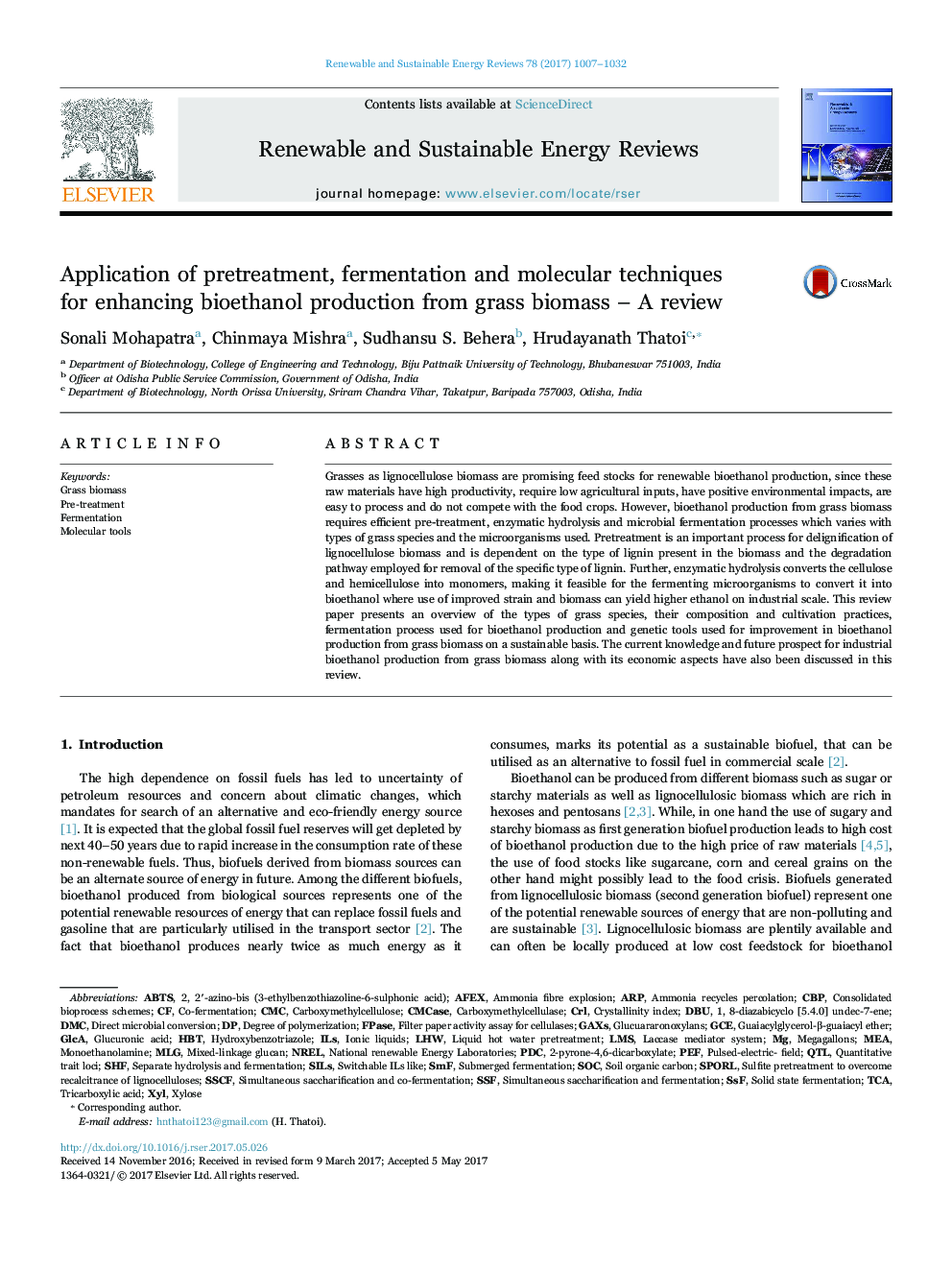| Article ID | Journal | Published Year | Pages | File Type |
|---|---|---|---|---|
| 5482518 | Renewable and Sustainable Energy Reviews | 2017 | 26 Pages |
Abstract
Grasses as lignocellulose biomass are promising feed stocks for renewable bioethanol production, since these raw materials have high productivity, require low agricultural inputs, have positive environmental impacts, are easy to process and do not compete with the food crops. However, bioethanol production from grass biomass requires efficient pre-treatment, enzymatic hydrolysis and microbial fermentation processes which varies with types of grass species and the microorganisms used. Pretreatment is an important process for delignification of lignocellulose biomass and is dependent on the type of lignin present in the biomass and the degradation pathway employed for removal of the specific type of lignin. Further, enzymatic hydrolysis converts the cellulose and hemicellulose into monomers, making it feasible for the fermenting microorganisms to convert it into bioethanol where use of improved strain and biomass can yield higher ethanol on industrial scale. This review paper presents an overview of the types of grass species, their composition and cultivation practices, fermentation process used for bioethanol production and genetic tools used for improvement in bioethanol production from grass biomass on a sustainable basis. The current knowledge and future prospect for industrial bioethanol production from grass biomass along with its economic aspects have also been discussed in this review.
Keywords
GCENRELSPORLCMCaseLaccase mediator systemSHFMLGGlcALHWCRLCBPLMSPEFMEAQTLCMCDMCARPAFEXDBUABTSPDCSMFILSGlucuronic acidSubmerged fermentationQuantitative trait locidegree of polymerizationHBTSOCSILSCrystallinity indexLiquid hot water pretreatmentIonic liquidsMonoethanolamineCo-fermentationseparate hydrolysis and fermentationhydroxybenzotriazoleSoil organic carbonCarboxymethylcellulasecarboxymethylcellulose
Related Topics
Physical Sciences and Engineering
Energy
Renewable Energy, Sustainability and the Environment
Authors
Sonali Mohapatra, Chinmaya Mishra, Sudhansu S. Behera, Hrudayanath Thatoi,
